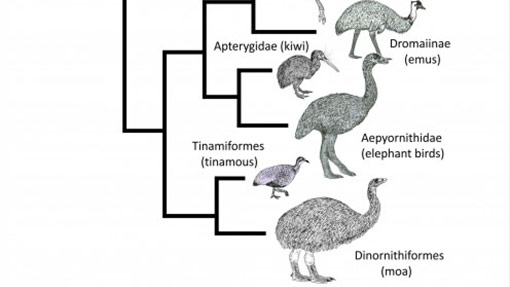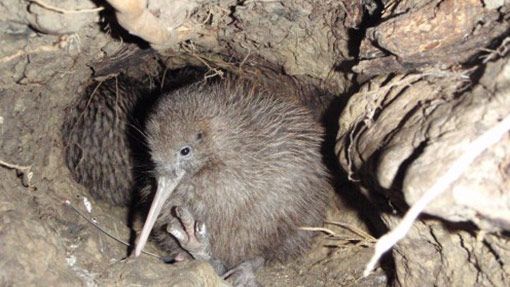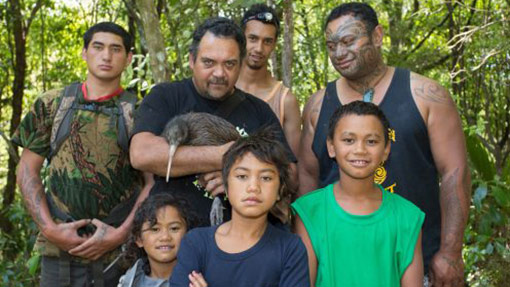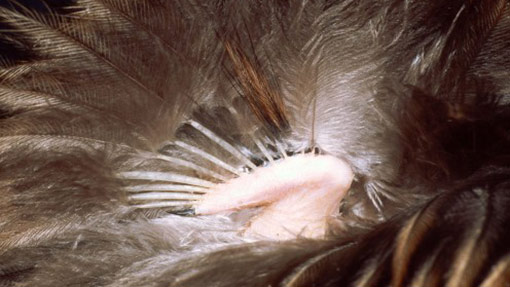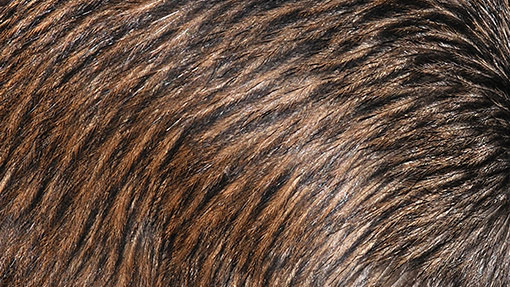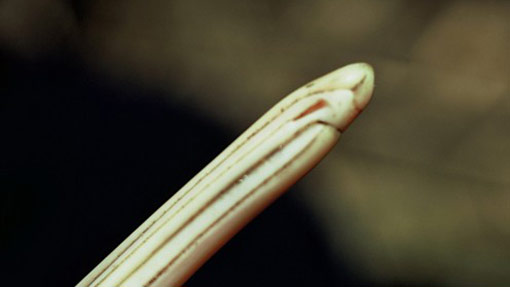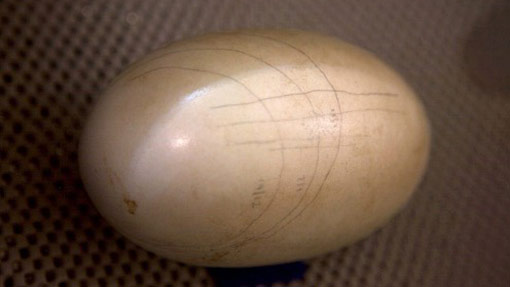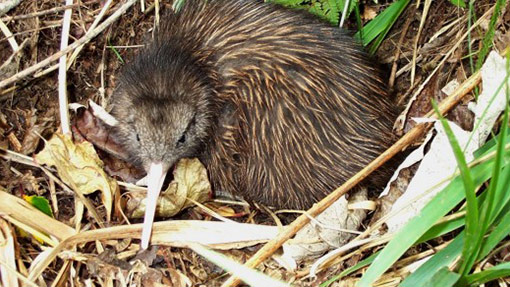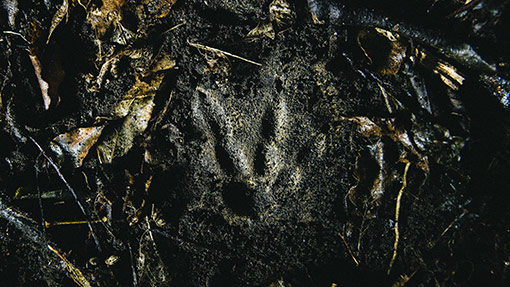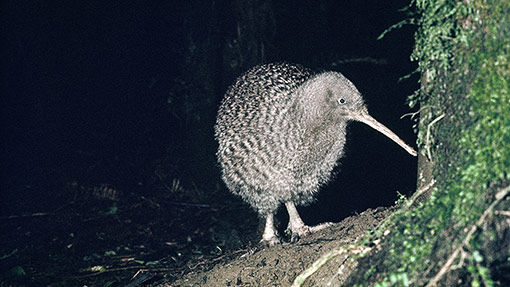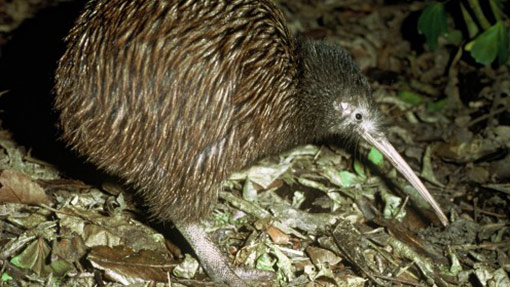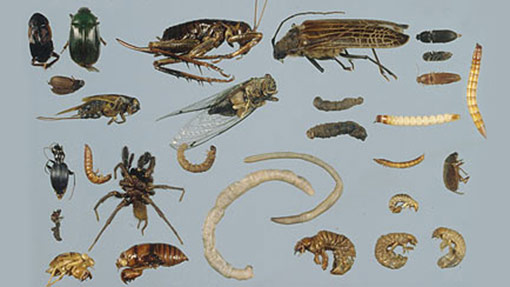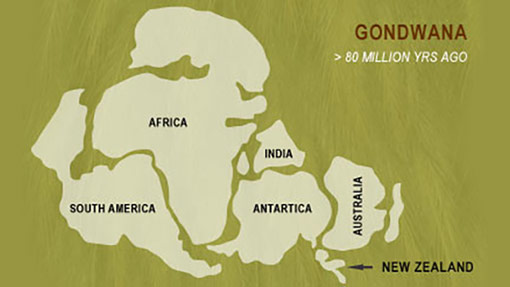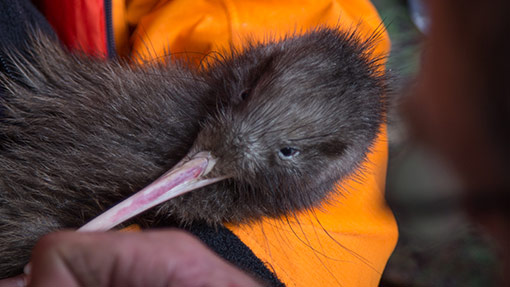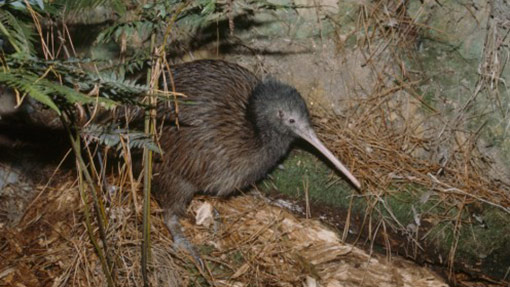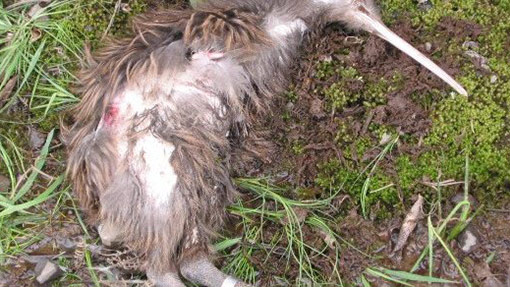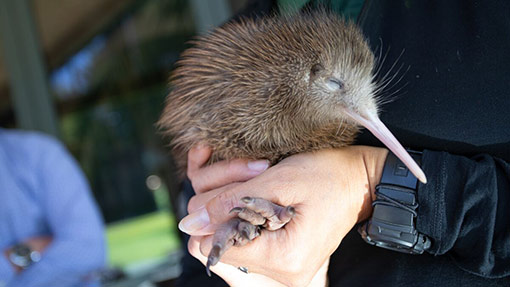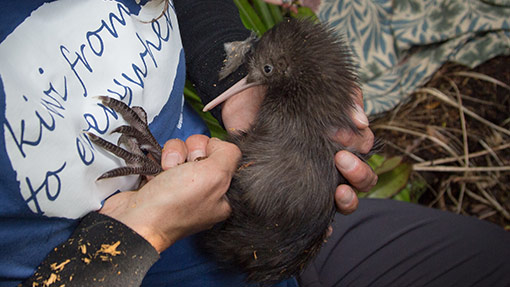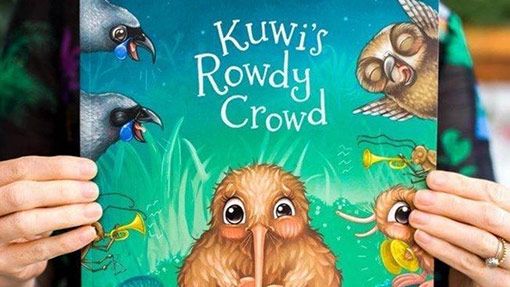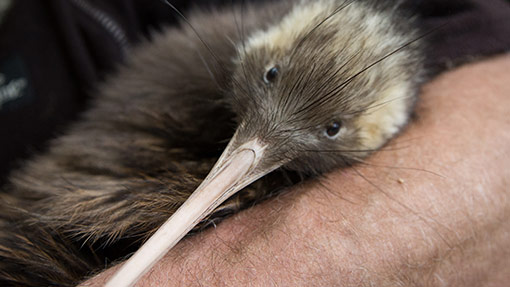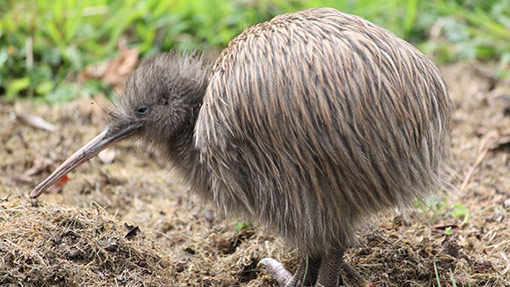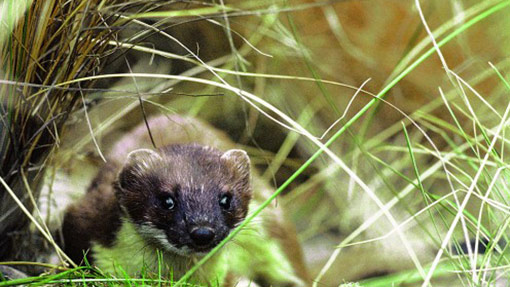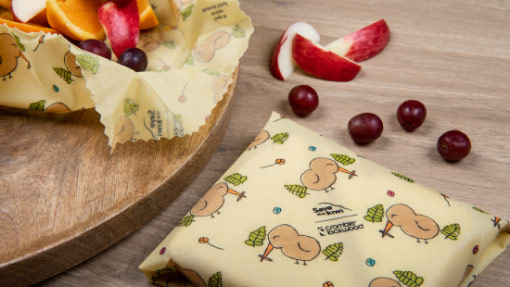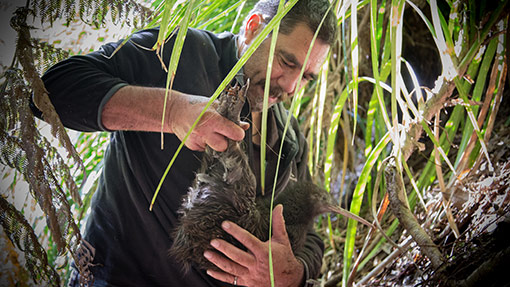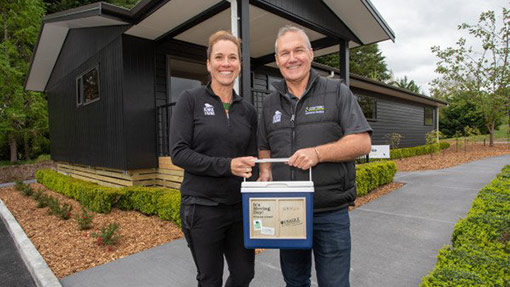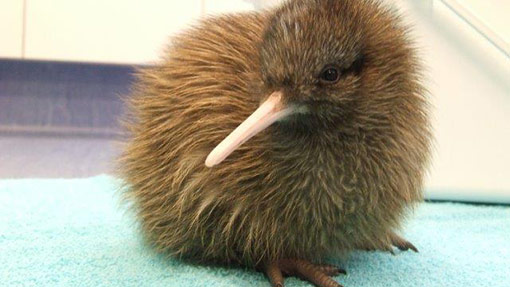It is thought that today’s kiwi evolved from one ancestor that lived about 50 million years ago: a proto-kiwi.
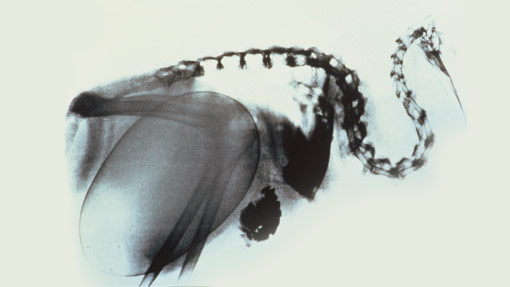
Isolated by the changing landscape
It is difficult to be certain about the kiwi’s evolutionary history as there are few fossil records. The oldest known fossil is a femur which is about 1 million years old and was found in coastal deposits near Marton in the North Island.
New Zealand’s changing landscape and land formation is thought to have influenced the way kiwi evolved. At various times the three main islands of New Zealand (North Island, South Island, and Stewart Island) were either joined together, split in different places and into different shapes, or were underwater.
As the landscape changed, groups of kiwi became cut off from each other. Because they couldn’t fly, they were kept isolated by physical barriers such as mountains and glaciers, wide rivers and seas, and by harsh terrain including infertile volcanic soils. Separated groups could only breed among themselves, sharing a gene pool.
As generations passed, kiwi in each group became increasingly different from kiwi in other groups. Nature selected traits most useful to their local environments and the groups became so different they no longer naturally interbred. Eventually they became separate species altogether.
A consistent design
Compared with other bird groups separated for such long periods, the design of kiwi has been remarkably conservative. Despite major differences in their genetic make-up, there are only slight physical and behavioural differences between species. For example, for a long time taxonomists didn’t recognise rowi as a separate species because their soft brown plumage, calls, and shared incubation are more similar to tokoeka than to their closest relative, the brown kiwi. It was only when the rowi’s DNA was studied that it became obvious it is a different species.
Changes took millions of years
Researchers think the first species separation happened when the brown kiwi group separated from the spotted kiwi. The next split happened somewhere south of Okarito on the West Coast of the South Island. It is thought that impassable glaciers separated populations of the ancestral tokoeka. During periods of isolation in ice ages, the birds south of the glaciers gradually evolved into the various forms of tokoeka we know today, with Stewart Island birds separating from the rest about 4 million years ago.
It’s thought that the group of birds north of Okarito, now known as rowi, extended as far north as southern Hawke’s Bay. Rowi remains have been found in pre-European Maori middens there. This was possible because at one point in New Zealand’s history, the sea strait dividing the North and South Islands was further north, running through about where the Manawatu Gorge and Hawkes Bay are now.
Brown kiwi ancestors reached the Taranaki area at a time when sea levels were lower and the two main islands were joined by land. When the islands split again, some birds became isolated on the North Island (about 2.5 million years ago) and evolved into today’s brown kiwi species.
At about the same time, the spotted kiwi split into the two species recognised today: the great spotted kiwi/roroa and the little spotted kiwi/kiwi pukapuka.
Adapting to life in the dark
Kiwi do not see in colour but do have a highly developed sense of smell – a useful adaptation for a bird that feeds at night.
Their changes in vision and smell were similar to adaptations found in nocturnal mammals. Only about three per cent of bird species are nocturnal, and kiwi are the only nocturnal ratite.
Part of the ratite whānau
Kiwi are part of a group of largely flightless birds known as ratites. Ostriches, emu, and the extinct moa are also part of this group.
Honorary mammals
The kiwi is sometimes referred to as an honorary mammal because of its un-birdlike habits and physical characteristics.
The hidden bird of Tāne
In Māori tradition, all living things on Earth originate from the union of Rangi-nui (the Sky Father) and Papatūānuku (the Earth Mother).
Flightless ... but has wings
The kiwi is one of New Zealand's many flightless birds. They didn't need to fly because there weren't any land mammal predators before man arrived to New Zealand 1000 years ago.
Feathers like hair
Because kiwi do not fly, their feathers have evolved into a unique texture to suit a ground-based lifestyle.
An unusual beak
The kiwi has an extremely unusual beak. Not only does it provide a keen sense of smell, it also has sensory pits at the tip which allow the kiwi to sense prey moving underground.
Enormous egg
In proportion to its body size, the female kiwi lays a bigger egg than almost any other bird. While a full term human baby is 5% of its mother's body weight, the kiwi egg takes up 20% of the mother's body.
Kiwi life cycle
Kiwi make their home in many different environments and have been described as 'breeding machines'. With the eradication of predators, the kiwi could be successful once again.
Kiwi signs
Being nocturnal, kiwi can be quite elusive but they do leave signs as to where they have been.
Bird of the night
Kiwi are nocturnal. Like many other New Zealand native animals, they are most active in the dark.
Kiwi calls
Kiwi call at night to mark their territory and stay in touch with their mate. The best time to listen for kiwi is on a moonless night, up to two hours after dark, and just before dawn.
What kiwi eat
Kiwi are omnivores. Their gizzards usually contain grit and small stones which help in the digestion process.
How kiwi came to Aotearoa
Just how did the kiwi journey to New Zealand? Three very different theories have been put forward to explain the mystery.
How kiwi evolved
It is thought that today’s kiwi evolved from one kiwi ancestor that lived about 50 million years ago: a proto-kiwi.
Kiwi myths
Kiwi experts are keen to dispel myths surrounding the kiwi - and there are quite a few!
Learn more about kiwi
Kiwi species
All kiwi are the same, right? Wrong. There are actually five different species of kiwi, all with their own unique features.
Threats to kiwi
The national kiwi population is under attack from many different threats, including predators, loss of habitat, and fragmentation of species.
Where to see kiwi
Many facilities around New Zealand are home to kiwi, plus there are places where, if you're lucky, you could see one in the wild too.
How you can help
Many hands make light work. Keen to join the mission to save the kiwi? Here are some ways you can help.
Protect kiwi
For kiwi to thrive, we all need to work together. Find out what you can do to help save the kiwi, wherever in Aotearoa you happen to be.
Fundraise
To continuing saving the kiwi, conservation groups need funding. Support the mission by making a donation, setting up a fundraising project, or engaging with other fundraising initiatives.
Shop for kiwi
Show your support for Save the Kiwi and some of our wonderful sponsors by purchasing products that will help us do more of what we do.
Donate
Make a quick donation, donate a day of annual leave or invest to save the kiwi.

